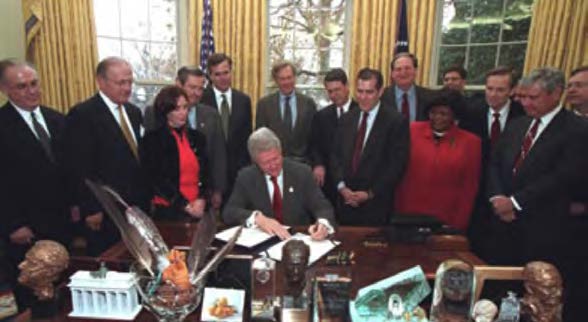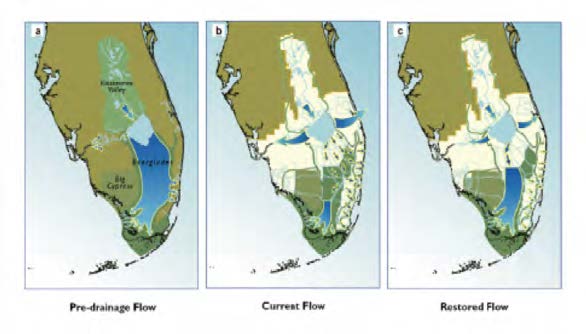Saving Paradise
 by Eric Eikenberg – CEO, The Everglades Foundation
by Eric Eikenberg – CEO, The Everglades Foundation
It was the last legislation that President Bill Clinton signed into law, the largest environmental restoration project in the history of the planet: a massive, multibillion-dollar rescue mission to save America’s Everglades.
The sweeping bill envisioned 68 separate public works projects, all with the goal of restoring the historic southward flow of freshwater from Lake Okeechobee to the Everglades and ultimately to Florida Bay.
The ambitious goals of the Comprehensive Everglades Restoration Project united Democrats and Republicans alike. Environmentalists and sugar industry lobbyists joined to support the bill, which had been years in the making. It followed extensive study by academic scientists as well as experts at the federal, state and local levels, including the U.S. Army Corps of Engineers, and reflected the views of stakeholders from across the region.

President Bill Clinton signed the Comprehensive Everglades Restoration Plan into law on
December 11, 2000. Since then, not a single one of the 68 restoration projects outlined in the
legislation has been brought to completion.
It has now been almost 20 years since President Clinton signed “CERP,” as it came to be known, but not one of its 68 projects has yet been brought to a conclusion.
What’s the matter here? More importantly, what can we do about it?
CERP outlined a funding mechanism almost as complicated as the projects themselves, but it suffices to say that construction costs were to be borne equally by both the federal and state governments. At various times and for varying reasons, either the federal government or the state of Florida (and sometimes both) failed to ante up.
The result has been that America’s Everglades — the location of a World Heritage Site, home to more than 70 endangered species and water source for 8 million people — is now on life support.
Things now seem to be changing. States of Emergency that closed beaches and restricted fishing in three of the last six summers finally awakened Florida to the consequences of inaction.
Massive public reaction to job killing cycles of red tide and blue-green algae forced action by policymakers both Tallahassee and Washington.
As of this writing, at least, they continue to respond favorably.

The goal of Everglades restoration projects under CERP is to restore, as much as possible,
the historic southward flow of fresh water from Lake Okeechobee into the Everglades and, from there, to Florida Bay.
What’s needed is a reliable and sustained funding stream of at least $400 million a year — $200 million apiece from the State of Florida and from the federal government. That’s no small task — but you can help.
If you’re a Florida resident, your legislators need to hear from you. Even if you live and vote elsewhere, your home state Senators and federal Representatives need to hear from you.
So far, more than 60,000 Americans from every State in the Union have contacted their lawmakers urging them to support full funding for Everglades restoration. To join us, text the word “WATER” to 56886. Follow the prompts and enter your information to email your Senators, Representative and the President. The Everglades is counting on you.
Eric Eikenberg is CEO of The Everglades Foundation, the leading science-based organization working to restore America’s Everglades.



Leave a Reply
Want to join the discussion?Feel free to contribute!